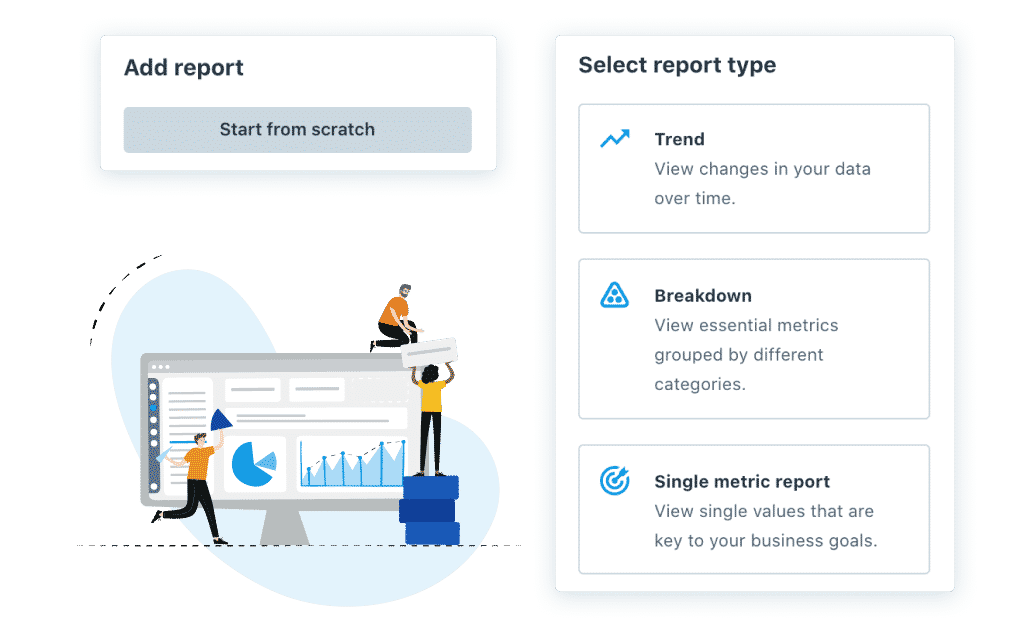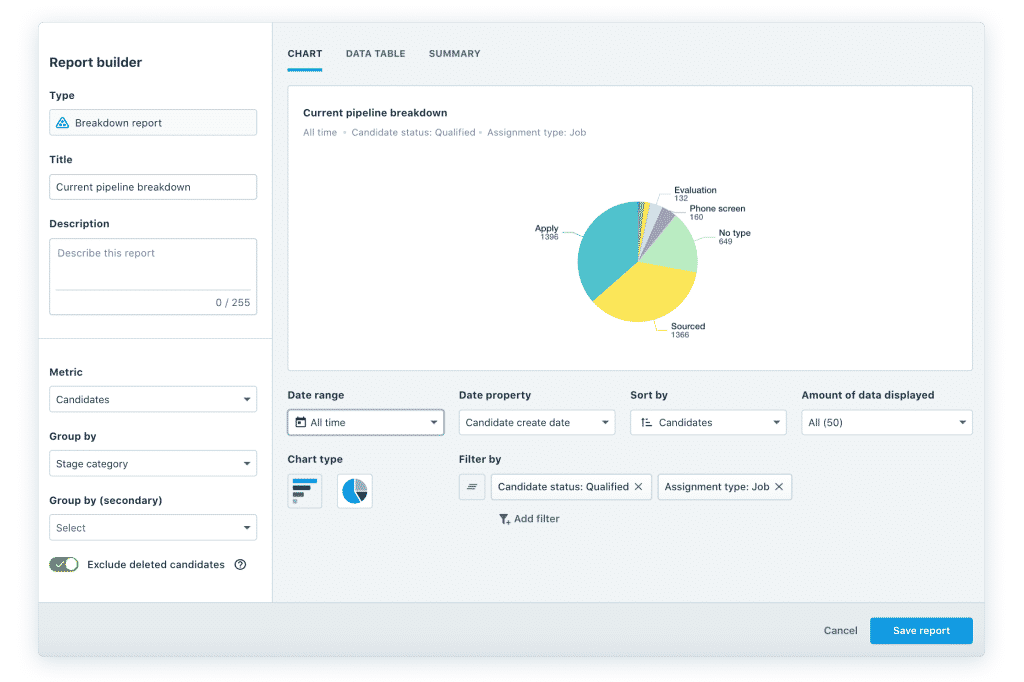Although talent analytics has been around for a good few years, and business leaders recognize the value, few organizations have fully embraced the concept. According to a Deloitte survey, only 4% of companies have predictive talent analytics capabilities, 14% of have a program in place, and 60% of companies still want to build a plan.
So what does talent analytics (or people analytics) give HR leaders?
It equips them with insights into their existing workforce that allows them to implement changes to optimize the environment to the benefit of their future workforce. That rather long definition is, in fact, a very empowering reality for all business leaders. In the boardroom, it’s widely accepted that the success of any organization depends on the quality and attitude of their workforce. Also, executives are expecting more than ever before from their employees.
The reality is that the approach of decision makers who lead employees very much dictate employee attitude and buy-in. And here’s the thing: weak leaders lay blame and refuse to listen to constructive criticism. Also, top employees won’t hang around for long if they believe the leadership is weak, so only the yes-people remain.
Strong leaders, on the other hand, are willing to hear their employees out and take action if necessary. They don’t feel threatened by different opinions and encourage innovation by being open to change.
Success needs management buy-in across the board
Data-driven decision making leads to better employee engagement, improved productivity, increased revenue, and improved employee retention. That’s because talent analytics allows HR, hiring, and line managers to make better people decisions. But it can only work if all decision makers, from supervisors to executives, understand the value.
Also, accumulation and analysis of employee data is a protracted and ongoing work in progress that requires constant input, analysis, and optimization from business leaders. Appropriately used, talent analytics can align your workforce with your strategic business plans and company vision, not only today but in the future as well.
Imagine if you could be assured of having the best talent and skills onboard when your company is ready to expand or venture into new markets. That’s not just wishful thinking anymore; talent analytics makes that ideal a reality.
To get there though, all managers have to be willing to invest time delving into the facts of their company and workforce by establishing:
- What were the past trends?
- Where do we stand today?
- What do we want to achieve?
- What type of people/skills do we need?
- What must we change to achieve our goals?
How it works
The application usually has three categories that, in combination, produce the ongoing statistics that will allow your business to make optimal decisions.
Hiring analytics
Used to analyze the information provided by job applicants and candidates throughout the hiring process. Critical requirements and skills listed on applications, CV’s and throughout the interview process are flagged, resulting in a shortlist of the best potential candidates, free of bias. Talent analytics metrics are an ongoing process. HR metrics gathered across vacancies over time will result in predictive hiring data to give you invaluable insight to make better hiring decisions.
Ongoing feedback analytics
Focuses on your existing workforce to establish if you have the best skills in all positions, analyzes team performance and identifies skills gaps. It’s also a vital tool in succession and growth planning. Through continuous feedback analytics, you can identify staff who:
- Can be upskilled
- Have leadership potential
- Would do better in different roles
- Are weak links affecting productivity
Optimization analytics
Brings together the statistics from hiring analytics and ongoing feedback analytics to produce predictive data that enables informed decision making, like Recruitee's Report Builder (see image below). Optimization analytics allows management to see their current situation, identify areas that need change or improvement and to take decisive action.
Talent analytics allows you to select the best talent based on factual information, free of any personal bias. It also helps you identify strengths and opportunities in your existing workforce as well as weaknesses that need to be resolved. To compete in business today, companies cannot afford to make guesstimates and decisions on a wing and a prayer.

Decision making today isn’t just about the here and now though, it’s also about anticipating potential future outcomes or probabilities. Accurate data equips decision makers with predictive analytics giving insight into what could happen. Not only that, with the right systems in place, you’ll also have prescriptive analytics at your fingertips providing insight into the best options and solutions.
It would be impossible for any organization to get this depth of information from department and management reports considering that bias and complacency are ever present in our thinking. That’s simply because we tend to believe in our own judgment of people or situations, and in a fast paced environment, who’s going to contemplate their own decisions?
Additional reading: How to use data-driven recruitment for hiring success

4 talent analytics examples
Your industry requirements will dictate what you need, but the use of analytics is as vast as your management team’s creativity. Once implemented, talent analytics will completely change your recruitment and selection process policy!
Here are four examples that not only refine hiring decisions but also improve employee engagement, enhance employer branding and increase profitability.
1. Automated application screening
This is probably the most widely used type of talent analytics at present. Once an application has been uploaded to your company careers page, the analytics application uses machine learning algorithms to read the screening question answers and the full CV. The words are analyzed and scored according to data and insights already in the system. This happens immediately that an application is received, and you get an updated list of the most suitable candidates.
2. Measuring employees’ sentiments and feelings
Although the value of a happy workforce is becoming a crucial factor in boardroom decisions, it hasn’t necessarily filtered down the management chain. Many managers still don’t take conscience of the wellbeing or opinions of their subordinates. This can lead to reduced productivity, bottlenecks in the supply chain and competition harming your employee retention rates. You can’t afford to have your best staff being poached; no company can in a world of scarce talent and resources.
Well-designed employee surveys will identify existing and potential problem areas. Traditionally, problems are only picked up once the harm is already done, and remedial action is mostly focused on damage control. Talent analytics allows you to step in and address issues before they manifest as a problem. By stepping in and listening to your workforce, you not only prevent disasters, but you gain employee trust and therefore their buy-in and loyalty. Sound employee engagement improves productivity, transparency, and staff retention.
Relevant: 20 employee engagement survey questions to ask
3. Employer brand awareness
Proper employer branding isn’t a once-off publicity stunt, and then you’re made! It’s an ongoing and evolving process of marketing your employer brand to staff, candidates and potential candidates. It’s the public face of what it would be like to work for your organization. Because we live in a constantly changing world, your employer brand should evolve as well. That’s where analytics can step in to guide you.
Employer brand awareness can be tracked in different ways. Tracking the volume of inbound traffic from people researching your company, applying for vacancies and interacting with your brand through various platforms is a good measure. This will allow you to adjust your brand message, image and visibility to attract the type of talent you need.
4. Increase profitability
Data-driven tools can be integrated across all sectors of an organization. They link up with time management systems, financial systems and training, and development programs.
Well-designed applications can analyze time versus money, comparing labor hours paid to total output or production. That way, you can identify patterns of irregular overtime and other payroll leakages. They can also be used to predict patterns of fraud and stock loss. Often these issues are overlooked because they develop gradually over time, and line managers take their employees at face value.
How do you get started?
Now that you’re convinced and all the tech jargon has been cleared out of the way – what’s the next step to building a plan? Firstly, congratulations on moving into reality and accepting that the role of HR has dramatically changed. You’re about to put your employer brand at the cutting edge of talent acquisition!
The first step is to centralize all your employee data and invest in an ATS if you haven’t already. The next essential step is to get all HR staff and management trained on what metrics and analytics are and how to use them, as seen below in Recruitee's Report Builder feature.

Talent analytics doesn’t exist in an HR silo, so you need to get your business intelligence team onboard, or bring in some outside expertise. Build a robust analytics skill set based on your organization’s needs that can be adapted as your business vision and strategy evolves.
Analytics must be linked to clear business outcomes, so start off by identifying existing problems that need to be addressed. Once you have a starting point, you’re ready to go. As you get results, you’ll understand how you can improve the system and make it part of daily management decisions. As your business problems are solved, you’ll begin to identify the endless potential of data-driven decision making. As with any system though, it must be monitored regularly for errors, areas of incompetence and room for optimization to keep it relevant. It’s that simple!







